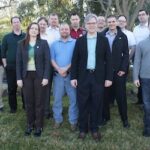|
|
CEO Sanjit Biswas talks about founding and developing Meraki
Watch on YouTube
Watch on Vimeo
Meraki’s journey began at MIT with a project called MIT RoofNet, which aimed to create a rooftop network covering Cambridge, MA. The project was led by Sanjit Biswas and John Dickett, who were PhD students at the time. They built the network from the ground up, including the radio chipsets, firmware, management, and routing protocols. The network, which eventually covered six square miles with 150 nodes, faced numerous challenges such as self-configuration, mesh routing, and dealing with adverse weather conditions. These experiences laid the foundation for Meraki’s future products and solutions.
The transition from an academic project to a commercial enterprise happened somewhat serendipitously. After presenting their research at Google, Biswas was approached by an enthusiastic individual who wanted to purchase $1,000 worth of their routers, even though the product was still in its conceptual stage. This unexpected interest led to the founding of Meraki in 2006. The company initially focused on wireless networking, releasing products that supported various standards like 11N. Over time, Meraki expanded its product line to include branch routing, security appliances, and most recently, gigabit switches. This comprehensive suite of networking products allowed Meraki to serve a wide range of customers, from small businesses to large enterprises.
Meraki’s cloud-based architecture is a key differentiator, enabling scalable and easy-to-manage networks. The architecture allows for real-time management data to be sent to Meraki’s data centers while keeping the actual network traffic local. This design ensures high availability and reliability, even if a local connection is lost. The cloud management system, known as the dashboard, provides network-wide visibility and control, making it easy to deploy and manage large networks. Meraki’s focus on customer experience is evident in their continuous feature updates, usability tests, and robust support system. This customer-centric approach has contributed to Meraki’s rapid growth and success in the networking industry.
Personnel: Sanjit Biswas
Live demonstrations of Meraki Wi-Fi gear with Pablo Estrada
Watch on YouTube
Watch on Vimeo
Pablo Estrada, Solution Architect at Meraki, demonstrated their cloud controller technology during Wireless Field Day 2, showcasing how Meraki is working with TelMex to implement HotSpot 2.0 and offload cellular data to wireless networks. The presentation focused on live demonstrations of Meraki’s Wi-Fi gear and its sophisticated cloud-managed dashboard, designed to give IT administrators an intuitive and powerful view of their network. Estrada began by navigating the Meraki dashboard, showing real-time analytics like access point status, client connections, and signal strength, and emphasized tools available for troubleshooting, including ping tests and traffic usage histories for both infrastructure components and end-user devices.
Throughout the presentation, Estrada highlighted the depth of telemetry data available through Meraki’s dashboard, such as detailed client device tracking, bandwidth consumption, application usage, and signal metrics. He demonstrated how administrators could troubleshoot individual devices by tracking their data consumption in real time, triangulating their location based on multiple access points, and even analyzing rogue SSIDs. The dashboard’s functionality extended to advanced mobile device management (MDM), which supports monitoring and controlling company-owned devices such as iPads through app installations, usage restrictions, and policy enforcement based on device type or user role. Estrada also covered capabilities around bring-your-own-device (BYOD), showing how automatic policy application ensures network security and bandwidth control without requiring manual intervention.
In the latter parts of the demo, Estrada explored Meraki’s network-wide and site-to-site VPN features, switches, and firewalls, demonstrating how their unified cloud platform manages wired and wireless devices together. He revealed the simplicity of configuring IPsec VPN connections, as well as the ease of distributing firmware updates and network policies. The dashboard’s application-layer traffic analysis tools allowed for bandwidth prioritization of critical applications like VoIP and blocking or throttling of peer-to-peer traffic. The session concluded with examples of Meraki’s use in enterprise and healthcare networks, showing how their scalable infrastructure meets robust management and compliance needs, including support for HotSpot 2.0 and emerging features like IPv6.
Personnel: Pablo Estrada








